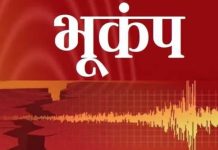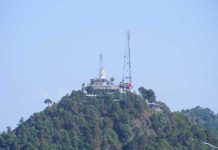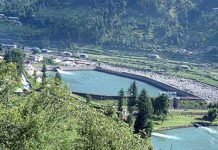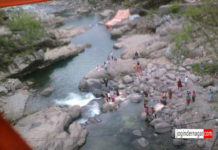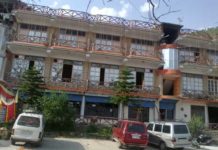History
Kangra is known for having the oldest serving Royal Dynasty in the world Katoch. Kangra became a district of British India in 1846, when it was ceded to British India at the conclusion of the First Anglo-Sikh War. The British district included the present-day districts of Kangra, Hamirpur, Kullu, and Lahul and Spiti. Kangra District was part of the British province of Punjab. The administrative headquarters of the district were initially at Kangra, but were moved to Dharamshala in 1855.This area was significantly damaged by an earthquake on April 4, 1905.
Upon Indian Independence in 1947, Punjab province was partitioned between India and Pakistan, and the eastern portion, including Kangra, became the Indian state of Punjab. Lahul and Spiti became a separate district in 1960, and Kullu in 1962. In 1966, Kangra and Una districts were added to Himachal Pradesh, which became a Union territory of India, and an Indian state in 1971. Hamirpur District was separated from Kangra in 1972. The twin township and riyasat of Haripur-Guler is also an important part of Kangra District that gave refuge to people during the Mughal period and offered patronage to them to make the famous Guler paintings. The village of Pragpur is also one of the most important historical part of Kangra region.
General Information
- Sub divisions in Kangra: Kangra, Palampur, Dharamshala, Nurpur, Dehra Gopipur, Baijnath, Jwali and Jaisinghpur.
- Tehsils in Kangra: Nurpur, Indora, Jwali, Kangra, Palampur, Badoh, Kasba Kotla, Jaswan, Dehra Gopipur, Khundiyan, Jaisinghpur, Baijnath, Fatehpur, Dharamshala and Shahpur.
- Sub-Tehsils in Kangra: Harchakkian, Dhira, Rakkad, Thural and Meerthan.
- Clothing: The traditional dress for men was the kurta, pyjamas, and a woolen jacket used in winter. Women generally wear the salwar kameez and with the salwar Kameez girls and women take chuenni (“Chaddru” in local language.)
- Population: 1,507,223
- Area: 5,739 km
- panchayat: 760
Demographics
Kangra has an average literacy rate of 83%, higher than the national average of 59.5%: male literacy is 85%, and female literacy is 81%. In Kangra, 10% of the population is under 6 years of age.
Climate
Kangra district is having a topography that some of the parts like Milawan at 400 m altitude, while area of Bara Bhangal are at the altitude of 5500 m. Indora block of Kangra district falls in sub-humid sub-tropical zone where annual precipitation works out about 1000 mm and mean temperature of about 24°C, Dehragopipur and Nurpur blocks fall under humid sub-tropical zone where the annual rainfall is between 900–2350 mm and mean temperature about 2° to 24°C.
Palampur and Dharamsala fall under wet temperate zone where the temperature ranges from 15 to 19°C and annual rainfall is about 2500 mm. (avg. of last fifty five years). Other parts of the Kangra district fall under hill area where the mean annual temperature varies from 13 to 20°C and annual rainfall is 1800– 3000 mm.The winter lasts from mid-December to mid-February, during which the temperature ranges from 0 to 20 °C. The winds cause winter rains. Summers last from April until June, and are hot (temp 25 to 38 °C) and dry. They are generally followed by a wet monsoon which ends in autumn.
How To Reach
- By Air
The nearest airport to reach Kangra is Gaggal airport, placed at distance of 7 kms from Kangra city.
- BY Train
The nearest broad gauge railway station to Kangra is at Pathankot placed at a distance of about 90 km from Kangra.
- By Road
Kangra is well connected by road Dharamshala is 17 km from Kangra and Delhi is about 500km from Kangra.







